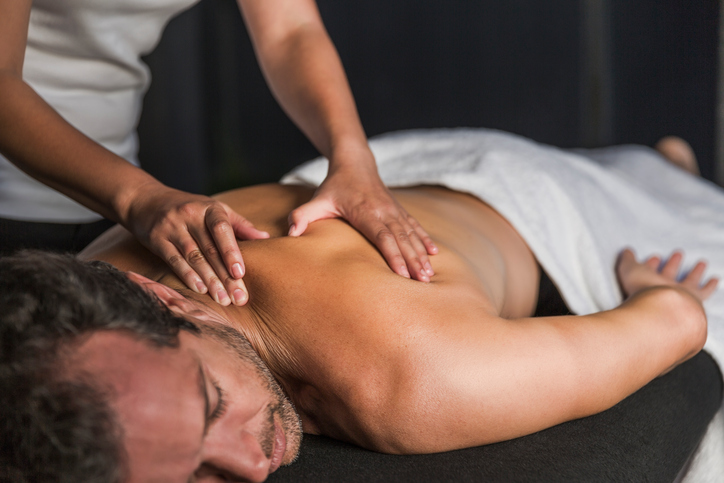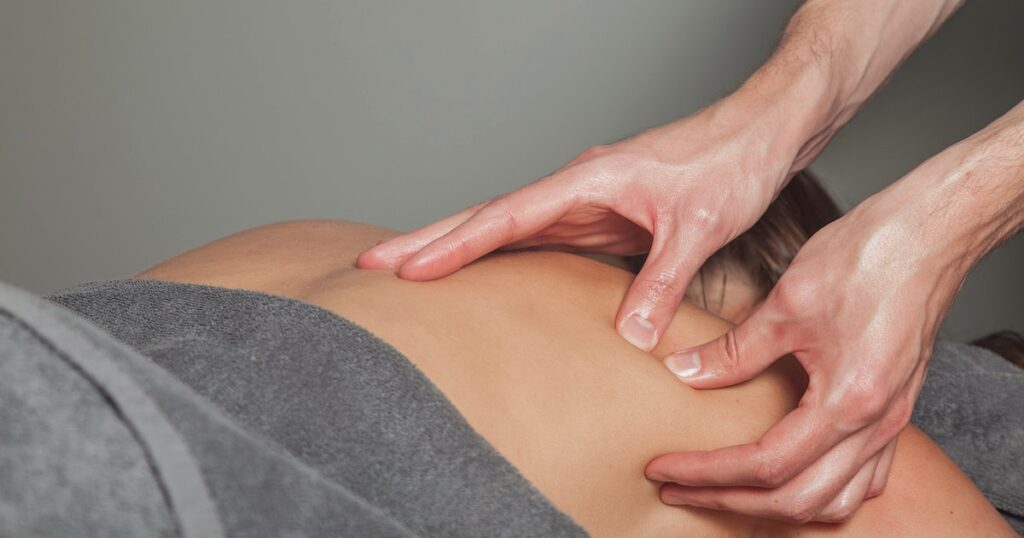In this article, we’ll discuss the question, “Should a massage turn me on?” We understand that massages can be a deeply relaxing and intimate experience, but it’s important to explore this topic further. We’ll provide insights and perspectives from our team of massage therapists and enthusiasts to help you understand the various factors that may contribute to feeling aroused during a massage. By the end of this article, you’ll have a better understanding of your own experiences and be able to approach massages with clarity and confidence.
Understanding Sensations in a Massage
The Purpose of a Massage
A massage is an ancient practice that aims to promote relaxation, reduce stress, and improve overall well-being. It involves the manipulation of muscles and soft tissues to release tension and promote a sense of calm. While the primary goal of a massage is not to induce sexual arousal, it is not uncommon for individuals to experience various sensations during a massage session.
Types of Sensations in a Massage
During a massage, you may experience a range of sensations, both physical and emotional. Physical sensations can include relief from muscle tension, a sense of warmth or tingling, or even slight discomfort in areas of high tension. Emotionally, you may feel a sense of relaxation, tranquility, or even emotional release. It is important to remember that these sensations are normal and can vary from person to person.
The Difference Between Pleasure and Sexual Arousal
It is crucial to distinguish between pleasurable sensations and sexual arousal during a massage. Pleasurable sensations can occur when your body is experiencing relaxation and relief from tension. They may include feelings of comfort, soothing touch, and an overall sense of well-being. Sexual arousal, on the other hand, is unrelated to the therapeutic benefits of a massage and may be elicited by different stimuli.
Physical and Emotional Responses
Relaxation and Stress Relief
One of the primary purposes of a massage is to induce relaxation and relieve stress. This can have a positive impact on your physical and mental well-being. As the massage therapist works on your muscles, you may feel a deep sense of relaxation and a release of tension. This can help alleviate the physical symptoms of stress, such as muscle pain and headaches, and promote a calmer state of mind.
Emotional Release in a Massage
In addition to physical relaxation, massages can also facilitate emotional release. Our bodies often hold onto emotional stress, causing physical discomfort and tension. During a massage, the therapist’s touch and the safe environment can create a space for emotional release. It is not uncommon for individuals to experience cathartic moments, such as crying or feeling a wave of emotions during a massage session. This release can be therapeutic and contribute to overall emotional well-being.
The Boundaries of Professionalism
Massage therapists follow a strict code of ethics which dictates the boundaries of professionalism. It is essential to remember that a massage is a professional service and should not be misconstrued as a sexual encounter. Massage therapists are trained professionals who prioritize your comfort, safety, and well-being. Any inappropriate or non-consensual behavior is strictly prohibited and goes against the professional standards upheld by massage therapists.

This image is property of goodspaguide.co.uk.
Personal Preferences and Boundaries
Respecting Individual Boundaries
Each person has their own comfort levels and boundaries when it comes to receiving a massage. It is important to communicate your boundaries and preferences to the massage therapist before the session begins. Whether it is a certain level of pressure, avoiding specific areas, or any other concerns, ensuring open and honest communication will help create a safe and comfortable space for both you and the therapist.
Communicating Comfort Levels
During the massage, if you experience any discomfort or if something does not feel right, it is important to communicate this to the therapist immediately. They are there to ensure your comfort and well-being and will be responsive to any concerns you may have. Remember that your comfort and boundaries are of utmost importance, and the therapist will make adjustments accordingly.
Setting Expectations with Your Massage Therapist
Before scheduling a massage, it may be helpful to have a conversation with your therapist about your expectations and goals for the session. Discussing any concerns or specific areas you would like to focus on will help both you and the therapist have a clear understanding of what you hope to achieve from the massage. This open dialogue will ensure that the session is tailored to your needs and preferences.
The Role of Trust and Consent
Consent in a Massage
Consent plays a vital role in any massage session. It is essential to have clear and explicit consent from both parties before the massage begins. Consent includes an understanding of the boundaries, expectations, and any adjustments that need to be made to ensure a safe and comfortable experience. Consent can be given through verbal communication or by signing a consent form, depending on the policies of the massage establishment.
Building Trust with Your Massage Therapist
Trust is an essential component of any therapeutic relationship, including the one between you and your massage therapist. Building trust involves feeling comfortable with the therapist, confident in their expertise, and reassured that your boundaries will be respected. It takes time to develop trust, but maintaining open communication and addressing any concerns that may arise will help foster a trusting relationship.
Establishing Clear Consent Guidelines
To ensure a safe and professional environment, it is important for massage therapists to establish clear consent guidelines. This includes explaining what will happen during the session, respecting any boundaries set by the client, and obtaining explicit consent for each part of the massage process. By clearly outlining these guidelines, both parties can feel secure and confident in the massage experience.

This image is property of content.artofmanliness.com.
Societal Influences and Stigma
Societal Views on Sensuality
Society often associates touch and sensuality with sexual intimacy, which can lead to misconceptions and misunderstandings about massages. It is crucial to separate the therapeutic benefits of a massage from any sexual connotations. Massages are intended to promote relaxation and well-being, and any sexual expectations or misconduct are not only inappropriate but also go against the ethical standards upheld by massage therapists.
Overcoming Stigma and Misconceptions
To overcome the stigma and misconceptions associated with massages, education and open dialogue are key. By sharing information about the purpose and benefits of massages, we can help dispel myths and promote a better understanding of the therapeutic nature of this practice. Encouraging conversations about boundaries, consent, and professionalism can also help create a more inclusive and judgment-free environment.
Creating a Safe and Judgment-Free Space
Massage establishments have a responsibility to create a safe and judgment-free space for their clients. This includes fostering an atmosphere of acceptance, respect, and professionalism. By implementing clear policies, providing proper training to therapists, and maintaining open communication with clients, massage establishments can create an environment that promotes trust, comfort, and well-being.
Professional Ethics and Guidelines
Code of Conduct for Massage Therapists
Massage therapists are bound by a code of conduct that outlines the ethical standards they must adhere to. This code includes guidelines regarding professionalism, confidentiality, consent, and maintaining appropriate boundaries with clients. By adhering to these ethical standards, massage therapists ensure the well-being and satisfaction of their clients while upholding the integrity of their profession.
Maintaining Professionalism
Maintaining a professional demeanor and approach is crucial for massage therapists. This includes displaying respect for clients, adhering to the agreed-upon boundaries, using appropriate language, and ensuring a safe and comfortable environment. Professionalism is key to establishing trust and providing a positive experience for clients.
Adhering to Ethical Standards
Along with professionalism, massage therapists must adhere to ethical standards to ensure the well-being of their clients. This includes obtaining informed consent, maintaining client confidentiality, and addressing any concerns or complaints in a timely and appropriate manner. By upholding these ethical standards, massage therapists demonstrate their commitment to the highest level of care and professionalism.

This image is property of www.sheknows.com.
Exploring Alternative Therapies
Tantric Massage and Sacred Sexuality
Tantric massage is an alternative therapy that combines massage techniques with teachings from ancient tantric traditions. It aims to promote relaxation, spiritual growth, and a deeper connection with oneself and others. While it may involve sensuality and intimate touch, it is important to note that the focus of tantric massage is on personal growth and self-discovery rather than sexual gratification.
Erotic Massage: Understanding the Distinction
Erotic massage, on the other hand, is primarily focused on sexual pleasure and gratification. It involves explicit sexual touch and arousal as its main goal, rather than therapeutic benefits or emotional release. It is important to understand the distinction between erotic massage and therapeutic massages to ensure that your expectations and boundaries align with the type of experience you are seeking.
Alternative Approaches to Sensuality
For individuals who wish to explore sensuality in a safe and consensual manner, alternative approaches such as tantra workshops, sexological bodywork, or intimacy coaching may be worth considering. These practices provide education, guidance, and support for individuals and couples seeking to enhance their connection, intimacy, and sensuality. It is important to approach these practices with an open mind and a willingness to learn.
Seeking Support and Guidance
Talking to a Therapist or Counselor
If you have any concerns or questions about the sensations or experiences you have during a massage, it can be helpful to seek guidance from a therapist or counselor. They can provide a safe and non-judgmental space for you to explore your thoughts and feelings. They can also help you navigate any emotional challenges or uncertainties that may arise from your massage experience.
Community Support and Discussion Groups
Joining community support groups or participating in online forums can offer a sense of validation and connection. Engaging with others who have similar experiences or questions can provide a supportive environment for discussion and learning. These groups can be a valuable resource for sharing insights, seeking advice, and gaining a better understanding of the massage experience.
Finding Resources for Sexual Wellbeing
If you are specifically seeking support or information about sexual wellbeing, there are numerous resources available. Books, podcasts, online courses, and workshops can provide education and guidance on various aspects of sexuality, including the exploration of sensuality in a safe and consensual manner. These resources can empower individuals to make informed decisions and create fulfilling experiences.

This image is property of imgix.bustle.com.
The Importance of Education and Communication
Educating Yourself about Massage
Education plays a pivotal role in understanding the purpose and benefits of a massage. By familiarizing yourself with the different types of massages, their intended outcomes, and the role of touch in therapeutic settings, you can have realistic expectations and make informed decisions about your massage experience. Learning about massage can also help dispel any misconceptions or stigmas associated with this practice.
Open Communication with Your Massage Therapist
Effective communication with your massage therapist is crucial for a positive and satisfying experience. Prior to the massage, clearly communicate your expectations, concerns, and any specific areas you would like to focus on. During the massage, provide feedback on the pressure, techniques, and comfort level to ensure that the therapist can adjust accordingly. Open communication will help the therapist tailor the session to your needs and ensure your overall satisfaction.
Continuing the Conversation
The conversation about whether a massage should turn you on is an ongoing one. It is important to continue exploring and discussing this topic to promote understanding, education, and safe practices. Massage therapists, clients, and the general public can all contribute to this conversation by sharing experiences, asking questions, and participating in dialogues that foster respect and knowledge.
Conclusion
A massage serves as a valuable tool for relaxation, stress relief, and emotional well-being. While physical and emotional sensations are a natural part of a massage experience, it is important to differentiate between pleasurable sensations and sexual arousal. By establishing clear boundaries, communicating openly with your massage therapist, and prioritizing trust and consent, you can ensure a safe and enjoyable massage experience. Remember that a massage is a professional service that aims to promote your overall well-being, and any sexual expectations or misconduct are not appropriate. Embrace the therapeutic benefits of a massage and appreciate the journey towards relaxation and self-care.

This image is property of www.massagemag.com.
